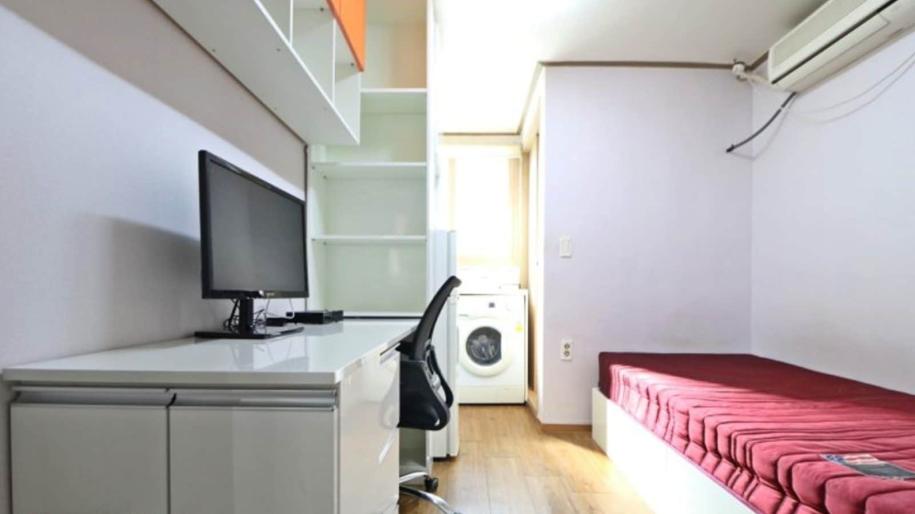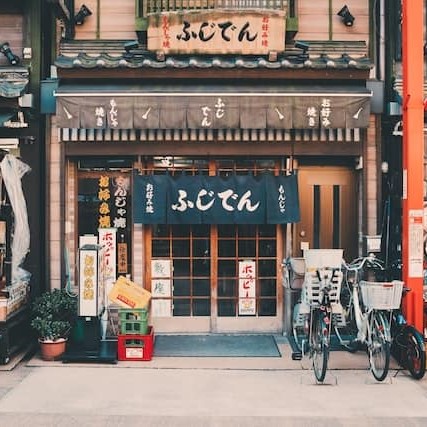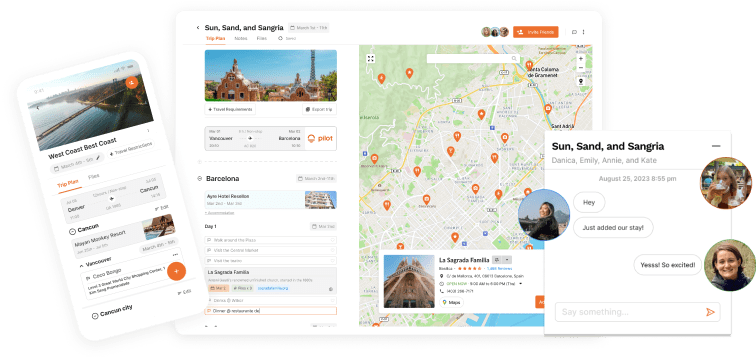Table of Contents
Traveling can be budget-friendly, too. You just have to find ways to save on costs. If you're an avid Asian traveler and looking for a way to save on accommodations, you should consider Goshiwon!
Like Japan, South Korea tends to be pricier than other popular destinations in Asia like Bali and Bangkok.
The good news though is that there's a type of accommodation that's very friendly on even the tightest of wallets: the Goshiwon.
While you might have already heard about compact accommodation options in Korea, the term "Goshiwon" is often unknown to those new to the country. Personally, I had no idea that they were even a thing until a friend introduced me to them as an affordable option for a hotel or hostel.
As of writing this, I have stayed in several different Goshiwons all over Seoul and Busan. Now, I'll lend you my expertise on this budget-friendly accommodation.
What Is a Goshiwon?
Goshiwon is also known as Goshitel, Livingtel, and Hasukjip. As we say in Sweden, a beloved child is known by many different names.
The idea for this type of accommodation was initially meant as a cheap option for Korean university students. A kind of off-campus dormitory.
It's for this reason that you'll still find most Goshiwons close to universities. But since they have grown in popularity over the years, they've also started to pop up in other locations too, even in more expensive neighborhoods such as Gangnam.
So, what exactly can you expect from a Goshiwon? A Goshiwon is a small room that usually contains the bare minimum of what you could need:
- Bed (with bedding)
- Desk
- Shelves or closets for storage
Depending on the Goshiwon in question, your room might also have the following:
- A fridge
- A TV
- A microwave
- A water cooker
If you're willing to spend a little bit more on your room, you can also get your bathroom with a shower, sink, and toilet. If not, these are shared with the other tenants of the Goshiwon. The kitchen and any washing machines are also shared with the other tenants.
While this isn't always the case, you also often get free food provided to you during your stay. What you get differs significantly across Goshiwons, but you can generally expect free rice, ramyun-noodles, kimchi, and water. It's by no means fancy food, but it's an excellent way to save money.
While this is more of an exception than a regular occurrence, I've stayed in a Goshiwon where the owner would regularly bring in different mysterious cans of food for those of us brave enough to try. Silkworms, anyone?

How Big is a Goshiwon?
This depends on a lot of different factors. As a rule of thumb, you could say the smaller the room, the cheaper.
I affectionately refer to my Goshiwons as my little personal closet, because that's what it feels like. You could stand in the middle of the room and easily reach each opposite wall.
In other words, a Goshiwon might be a bad option for someone who's very claustrophobic.
That said, bigger rooms are available but generally cost more than smaller ones.
How Much Does a Goshiwon Cost?
The price of a Goshiwon is the very thing that makes it such an attractive option, not only for students and travelers but for your average single Korean as well.
Unlike renting a regular apartment in Korea, you often don't have to pay a deposit to stay in a Goshiwon. You do not have to pay for electricity, gas, water, or any other amenities. Everything is included in the rent.
The cheapest options often go for as little as 200,000 won and, at the time of writing, roughly 154 USD per month. The pricier options, on the other hand, can climb to as much as 800,000 won or about 616 USD.
It's also worth noting that many of the cheapest options often come without a window and a private bathroom. I'd go crazy without at least a window, so the cost of getting a room with one is worth it.
Generally, you can pay up to 50,000 won or $38 extra monthly for a room with a window.

Different Types of Goshiwon
While many of the different names used to describe a Goshiwon are used interchangeably, there are some differences between the additional terms.
Goshitel or Livingtel
This type of Goshiwon is like a hybrid between a regular Goshiwon and a hotel. Many times, you can expect to get better facilities and a bigger room compared to a regular Goshiwon.
These usually go for between 350,000-700,000 won per month.
Hasukjip
While Goshiwons are more like dormitories, Hasukjip closer resembles boarding houses where you can choose between a single or double room.
There are always exceptions, but often there'll be an older Korean woman at the Hasukjip who takes care of the housekeeping and cooks meals for the tenants. You can expect to pay around 300,000-500,000 won per month.
One-room-tel
If you're not a fan of sharing, this is a better option for you. While they're still on the smaller side in terms of size, you can get everything you need in a one-room-tel.
A bathroom, laundry machine, and mini-kitchen are usually included. On the other hand, they might not come without a bed, desk, or closet.
These are generally aimed at working professionals. The price typically ranges between 300,000-700,000 won, depending on the size and furniture included.

How Do You Find and Book a Goshiwon?
Though you might find limited options for Goshiwons on Booking.com, finding a Goshiwon is easier than you think.
A few years ago, your options for finding and booking a Goshiwon were limited. If you didn't speak a word of Korean, it would have made your quest even more difficult.
Thanks to Goshiwon's growing in popularity, it's now getting much easier to find yourself a room with only a few clicks.
When I'm staying in Seoul, I like to use Goshipages to search for and contact any Goshiwon I am interested in. They offer different ways for you to search for your Goshiwon. Each room is presented with descriptions of what is included.
That said, you shouldn't put too much faith into the photos provided. If there's one thing I have learned during my stay in Korea, it's that you should take pictures of Goshiwon with a grain of salt.
Usually, they make the room look bigger and newer than it actually is. It can be so disappointing when you finally show up and move in.
Goshipages are also an excellent option for those that don't speak Korean. I only know a few words, and more is needed to hold a conversation. Still, I've had no problems contacting and arranging a room with the hosts of various Goshiwons.
DabangApp is another popular option if you know how to speak Korean. If you don't, I would recommend sticking to any of the other options instead.
You're probably familiar with the service, Airbnb. They're also an excellent option for finding a Goshiwon in Korea, particularly outside of Seoul. I personally used them to find and book a Goshiwon in Busan.
The last option is to simply show up at an area you are interested in. You are almost guaranteed to find a Goshiwon you can move into on the same day.
This is not the greatest option if you have a lot of bags with you. In that case, I recommend reaching out and booking a room before you arrive.

Pros and Cons of a Goshiwon
Goshiwon Pros
These days I always stay in a Goshiwon when I visit Korea. It's a great way to save money, and it's also a great way to meet other people, both Koreans, and travelers, if you wish.
If you're like me, you also value being able to close the door to your room and have some privacy.
There are exceptions to the rule, but a Goshiwon spanning multiple stories often has separate floors for women and men. In other words, aside from being cheap, it's also a very safe option for solo female travelers.
While it's not a problem for me, others need help with the small size of the room itself. In the west, many people are used to having more space which is why it can feel very claustrophobic to suddenly stay in a room that's the size of a large closet.
Goshiwon Cons
On the other hand, a Goshiwon offers more space than your average hostel dorm.
The walls are very thin, which means you can hear everything going on around you, both inside and outside. An issue is if you're staying in a particularly noisy or crowded area like Hongdae or Sinchon in Seoul.
Even if you're a big fan of K-pop, it can start to get on your nerves when you're lying in bed at 3 am listening to drunk Koreans singing along to BTS outside the karaoke bar. As you can tell, I'm speaking from personal experience.
Visitors are generally not allowed in a Goshiwon either, and the rooms are usually meant for single occupancy. While this hasn't been an issue for me, I know others who have felt lonely while staying in a Goshiwon for this exact reason.
Overall Consensus
Basically, if you're looking to save money when traveling in Korea, then a Goshiwon is a great option. As I said, these days I always stay at one whenever I'm there.
That said, if you expect luxurious housing, you're better off at a hotel. Many times, you're only offered the absolute bare minimum to survive. On the other hand, it's a very cheap alternative to both hotels and hostels.
How long you can stay in a Goshiwon is also very flexible and you can come and go pretty much as you please. While many Goshiwons won't allow you to stay for less than a month, others will let you stay for only a few days as well.

Plan Your Trip to Korea With Pilot
If you're planning to take a trip to Asia or anywhere else in the world, Pilot is a fantastic trip-planning tool to keep in mind!











![Paris Neighborhoods Guide [2024]: Areas to Visit & Avoid!](https://assets-global.website-files.com/63d1baf79ce0eb802868785b/65b947376eff1a3e72606d03_Paris%20Neighborhoods%20Guide.jpg)
![14 Top things to do in Seoul South Korea you can't miss! [2024]](https://assets-global.website-files.com/63d1baf79ce0eb802868785b/63d1baf89ce0eb226f688b8d_Things%20to%20do%20in%20south%20korea.jpg)
![12 Airbnb Alternatives to Consider For Your Next Trip! [2024]](https://assets-global.website-files.com/63d1baf79ce0eb802868785b/63d1baf89ce0eb27806886f9_airbnb%20alternatives%20thumbnail.jpg)
![Backpacking in Japan: Guide + Tips for Beginners! [2024]](https://assets-global.website-files.com/63d1baf79ce0eb802868785b/643c824f60a2b628482f2ae2_japan-backpacking.jpg)

![8 Best Things to do in Tokyo, Japan you can't miss! [2024]](https://assets-global.website-files.com/63d1baf79ce0eb802868785b/63d1baf89ce0eb286368815a_9876543.jpeg)
